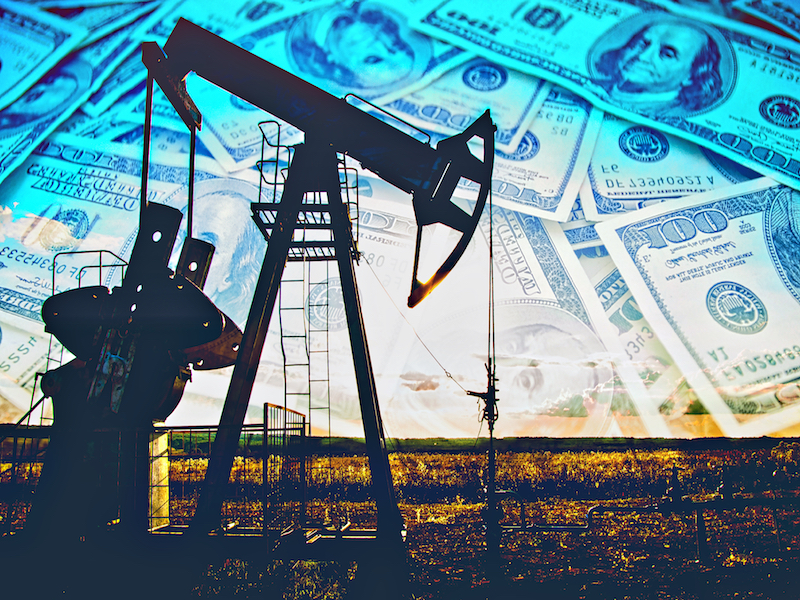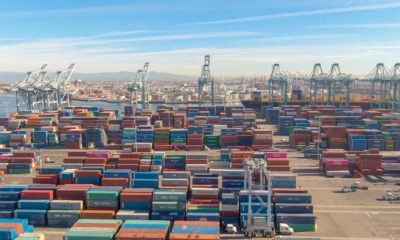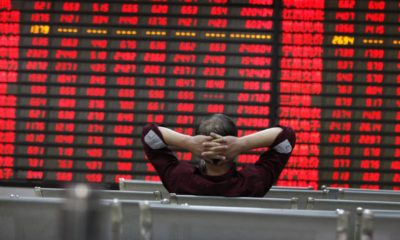bank
Oil And The Economy: A Sticky Marriage

It is no accident that gas stations are the only outlet to advertise their prices to the fraction of a cent, using decimals to show you the exact price.
Some believe this is purely down to pricing psychology and maximizing profit, but it is not that simple.
The price of a barrel of oil is of interest to many people, as it has huge knock-on effects for the wider economy.
Here we will analyze said effects.
First, how it all started
In January of this year, oil was at its lowest price since 2001, going for $30 a barrel.
In comparison, in July 2014, it was around $100 a barrel.

In 2005, it was made legal, and since then, oil production has ballooned domestically, thus reducing the need for crude oil imports, as shown in the graph below, courtesy of the Energy Information Administration:

Since the US is the largest consumer of oil in the world, it only makes sense for oil-producing nations like Saudi Arabia and Russia to be forced to reduce the price of oil as the United States’ demand decreased.
The main oil-producing countries produce 80% of oil and make up the OPEC countries: Iraq, Iran, Kuwait, Algeria, Libya, Nigeria, Angola, Qatar, Saudi Arabia, the United Arab Emirates, Ecuador and Venezuela.
Out of a fear of losing market share, they refused to decrease production, continuing to drill and sometimes even increasing operations.
This inevitably compounded the effect on the market and drove the price even lower.
They chose to ensure continued size of operations and maintenance of market share above profitability.
[ms_divider style=”normal” align=”left” width=”100%” margin_top=”30″ margin_bottom=”30″ border_size=”5″ border_color=”#f2f2f2″ icon=”” class=”” id=””][/ms_divider]
[ms_featurebox style=”4″ title_font_size=”18″ title_color=”#2b2b2b” icon_circle=”no” icon_size=”46″ title=”Recommended Link” icon=”” alignment=”left” icon_animation_type=”” icon_color=”” icon_background_color=”” icon_border_color=”” icon_border_width=”0″ flip_icon=”none” spinning_icon=”no” icon_image=”” icon_image_width=”0″ icon_image_height=”” link_url=”https://offers.thecapitalist.com/p/58-billion-stock-steal/index” link_target=”_blank” link_text=”Click Here To Find Out What It Is…” link_color=”#4885bf” content_color=”” content_box_background_color=”” class=”” id=””]This one stock is quietly earning 100s of percent in the gold bull market. It's already up 294% [/ms_featurebox]
[ms_divider style=”normal” align=”left” width=”100%” margin_top=”30″ margin_bottom=”30″ border_size=”5″ border_color=”#f2f2f2″ icon=”” class=”” id=””][/ms_divider]
The following chart shows the prices these oil-dependent economies need to break even.
Consider oil is now near $30 a barrel, the commitment to maintaining market share is clear.

GDP growth stalling
Many economists fear that low prices for oil, while great for the motorist consumer and oil-sensitive industries, are having a detrimental effect on the economy.
The reasoning is the size of the US oil industry.
The shale oil industry has also taken a huge hit, having needed to reduce prices to around $60 to stay competitive.
This is touted by some to be no more than a break-even price.
There is also the possibility that the low price of oil has hit consumer confidence.
While people may be happily guzzling all this cheap gas, they could be slightly more conservative with the rest of their money, fearing that things could take a turn for the worse.
Or it could simply be that they spend less on other things since they started taking advantage of all the cheap gas on offer.
This graph indicates that the price of oil is somewhat negatively correlated with the state of the economy, seeing high prices when the economy was in recession:

Jobs, Jobs, Jobs
A recent jobs report showed lower than expected job creation, and revised previous figures, showing the US economy is in a much weaker position than previously believed.
The fall in revenue from big oil has certainly had some part to play in this.
Many oil companies are now scaling back production and laying off workers.
There is a huge conversation to be had now about the massive costs of removing and bringing back the oil rigs which are to be found in seas all over the globe.
These will be estimated to cost in the billions of dollars.
The size of these industries and their reduced investment activity in the capital they need to operate – human labor, pipes, ladders, tanks, vehicles, and research – have strong negative ripple effects to the wider economy.
These industries grew alongside big oil, and so any weaknesses it experiences will be felt by those around it.
Stock Market turmoil
The S&P 500 is often interpreted as an indication of the state of the wider economy.
If that is anything to go by, oil is hugely affecting its current well-being.
Big oil represents a big chunk of the companies on that list.
The price of crude oil dragged down the oil shares of the S&P 500 by 13% at the beginning of this year, which in turn dragged the index as a whole down 9%.
Of the 20 biggest losers in the S&W 500, 13 are oil companies.
The most notable of these are Exxon Mobil and Chevron, who are also part of the 30-member Dow Jones Industrial Average.
The Winners
As was mentioned before, it isn’t only motorists that love a bargain barrel of oil.
Oil-sensitive industries also gain big, thanks to cheaper oil meaning lower overheads and thus higher profits.
As reported by the NY Times, the four big Airlines, American, Southwest, Delta, and United, reported combined profits of $22 billion, a huge bounce back after decades of losses.
However, this hasn’t translated into lower prices for consumers, as many airlines have a virtual monopoly over certain routes.
The need for improved competition is demonstrated remarkably in this case.
The auto industry is also seeing record growth thanks to the cheaper cost of driving.
Last year it saw all-time record sales.
Pickup trucks, which guzzle a lot of oil, saw the largest increase in sales, but there was strong growth across all companies and models.
Deflation?
In September 2015, the Federal Reserve raised interest rates for the first time since the financial crisis: a message that the economy was healthy, and the dog of borrowing didn’t need the bone of low charges to wag its proverbial tale.
At least, this is what it is meant to do.
However, with inflation hovering around two percent, the Fed is still nervous.
Oil undoubtedly has had a part to play in the lack of growth and lack of inflation that comes with it.
As such, the raising of interest rates is viewed very cautiously, as this can reduce inflation.
Too much inflation is obviously disastrous, but two to three percent is ideal, and any less is risky.
It can lead to cutbacks, defaulting, and financial insecurity.
Final Word
Well, there you have it.
Whether it’s reduced jobs in interconnected industries, weak stock market performance, or huge airline and auto industry profits, and happy motorists, oil’s influences stretch far and wide in the economy.
Of course, this low price in oil could stop being a shift but rather could become a long-term fact of life.
With new technologies allowing both alternatives to oil and more efficient extraction in home countries, we could have a permanently low price of oil.
Should this be the case, the effects of the course of the world political economy will be enormously bigger than anything in this article.















